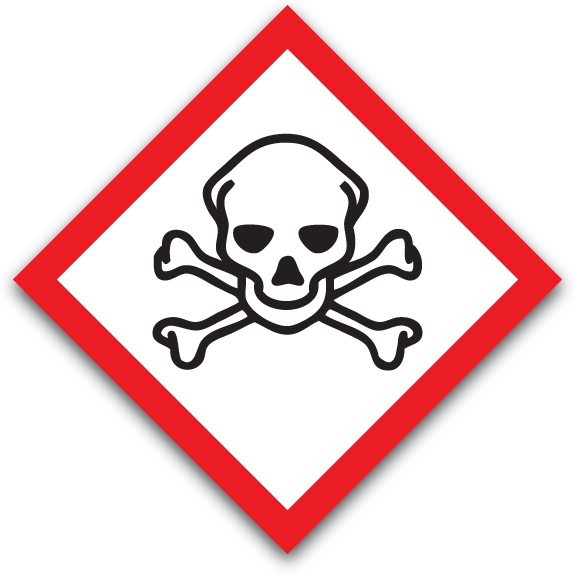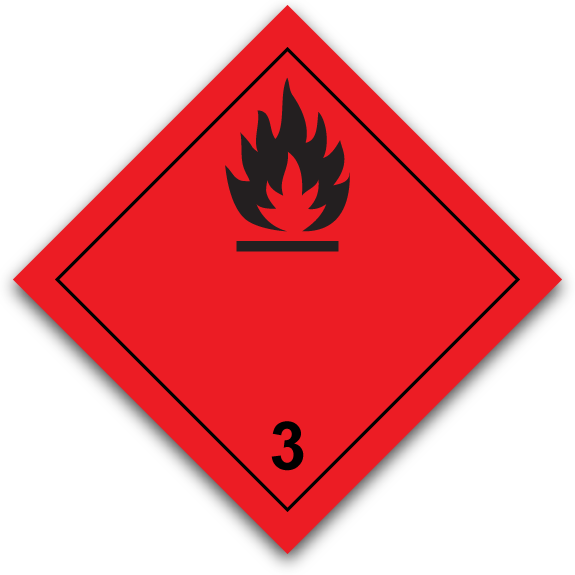GHS Labels: What They Look Like and What They Mean

When a company makes, stores, or ships dangerous chemical products, they need to ensure the Globally Harmonized System (GHS) pictogram is visible on GHS-compliant labels. OSHA fines and penalties for non-compliance range from $7,000 per violation to $12,600 per violation, and for more serious issues from $70,000 to $127,000 per violation.
Nine hazard identification pictograms under the GHS classification convey physical, environmental, and health hazard information. The Hazard Communication Standard (HCS) requires eight pictograms, except the environmental pictogram, as OSHA regulations do not cover environmental hazards.
How Does GHS Labeling Work?
All hazardous chemicals shipped after June 1, 2015, must be labeled with specified elements, including pictograms, signal words and hazard symbols, and precautionary statements.
When you have a product—for example, a flammable liquid—you must first classify the physical and chemical hazards. Once a hazard is classified, you must use the appropriate signal word, hazard statements, precautionary statements, and pictograms on the label and Safety Data Sheet (SDS).
Pictograms are a standardized set of simple-to-understand symbols. Using these symbols on labels and SDSs promotes understanding and eliminates language barriers.
History Of The GHS Label
Before the Globally Harmonized System of Classification and Labeling of Chemicals (GHS) was made and put into place, different countries had different rules about how to classify hazards. This meant that the same hazard had different standards, classifications, and labels. Given that the worldwide market for labeled chemicals is $1.7 trillion every year, the cost of following multiple classifications and labeling systems was high. Creating a worldwide standard that could be used instead of local and regional systems was a chance to save money and make sure everyone followed the rules.
At the 1992 Rio Conference on Environment and Development by the United Nations, also called the Earth Summit, the International Labour Organization (ILO), the Organisation for Economic Co-operation and Development (OECD), and various governments and other stakeholders agreed that a globally harmonized hazard classification and compatible labeling system, including material safety data sheets and easily understood symbols, should be a priority.
All of the different classification systems were supposed to be replaced by a universal standard for all countries. However, this is not a requirement of any treaty. The GHS gives participating countries a common set of tools to use when putting into place a Hazard Classification and Hazard Communication Standard.
What's on A GHS Compliant Label?
GHS label requirements for hazardous chemicals state a label must contain six parts:
- Name, Address, and Telephone Number of the material supplier
- Product Identifier
- Signal Word
- Hazard Statements
- Precautionary Statements
- Pictograms
Parts Of The GHS Label of Chemicals
Product Identifier
This section gives the product ID and name of the dangerous chemical. Ensure that the name and ID on the label and the Safety Data Sheet are the same.
Signal Words
The GHS uses two signal words, "Danger" and "Warning," to tell the reader how dangerous it is to handle a particular material. These signal words show the level of danger on both the label and the SDS. The classification system indicates which signal word to use, either "Danger" or "Warning," depending on how dangerous the chemicals in the material are at their worst, with “Danger” meaning that the risk of injury or illness is particularly high.
Hazard Statements
Hazard statements are GHS standardized statements describing the dangers a material poses. For example, a hazard statement should tell the reader if the materials are dangerous to their health or bodies. Statements are unique to each category of hazard classification.
Statements of Caution
Cautionary statements explain what people using the material should do to limit or avoid exposure to harmful things. There are four types of precautionary statements: prevention, emergency response, storage, and disposal. "Wear protective goggles" is an example of a precautionary statement. "Do not induce vomiting" would be an emergency response.
Additional Information
Extra information could include instructions on handling the material not contained in the GHS precautionary statements. This part of the label isn't mandatory simply because most labeled items don't need extra information conveyed.
Pictograms
Standardized GHS symbols called "pictograms" quickly show people working with materials what risks they pose. Many of the GHS pictograms are the same as the ones used in the U.S. and Canadian HazCom regulations, so North American consumers will be used to seeing them.

How To Use GHS Pictograms
A pictogram is a graphical composition that may include a symbol plus other elements, such as a border, background pattern, or color, that convey specific information. All hazard pictograms should be diamond shaped.

For transportation of hazardous chemicals, the pictograms prescribed by the UN Model Regulations on the Transport of Dangerous Goods should be used. These pictograms must have minimum dimensions of 3.9 inches by 3.9 inches, except for smaller pictograms on very small packaging and gas cylinders. Transport pictograms have symbols on the upper half of the label. The pictograms should affix to a background of contrasting colors.

What Employers Need to Do
Employers are responsible for maintaining labels on the containers, including (but is not limited to) any tanks, totes, and drums. This means that labels must be maintained in such a manner that they are legible with regards to the pertinent information, according to OSHA guidelines. Importantly, labels should not be removed or defaced in any way. OSHA gives, as examples of defacement, labels that have become faded or washed off. With a little creativity, other examples should be clear as well—for example, if a label has been covered over, scratched out, or partially melted, or otherwise rendered unreadable.
If a label has been removed or defaced, it is the employer’s responsibility to relabel the item.
When it comes to workplace labels, employers have the option of using those provided by the manufacturer or using their own. If using their own, they must include all of the relevant information (product identifier and words, pictures, symbols that provide specific information regarding the hazards of the chemicals in question).
Furthermore, employers may use additional instructional symbols on their workplace labels that are not included in OSHA’s HCS pictograms. For example, an instructional pictogram might have a person with goggles, denoting that goggles must be worn while handling the given chemical.
In short, while most employers will not be responsible for the creation and applications of GHS labels, they are responsible for maintaining them and ensuring that they are readily visible to, and readable by, the employees who will be handling hazardous chemicals.
Additional Resources:
- Downloads: Free HazCom Signage templates
- Information: Chemical Management solutions
- Blog Post: Rules for Proper Secondary Container Labeling


